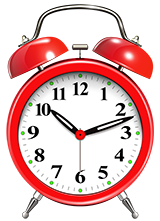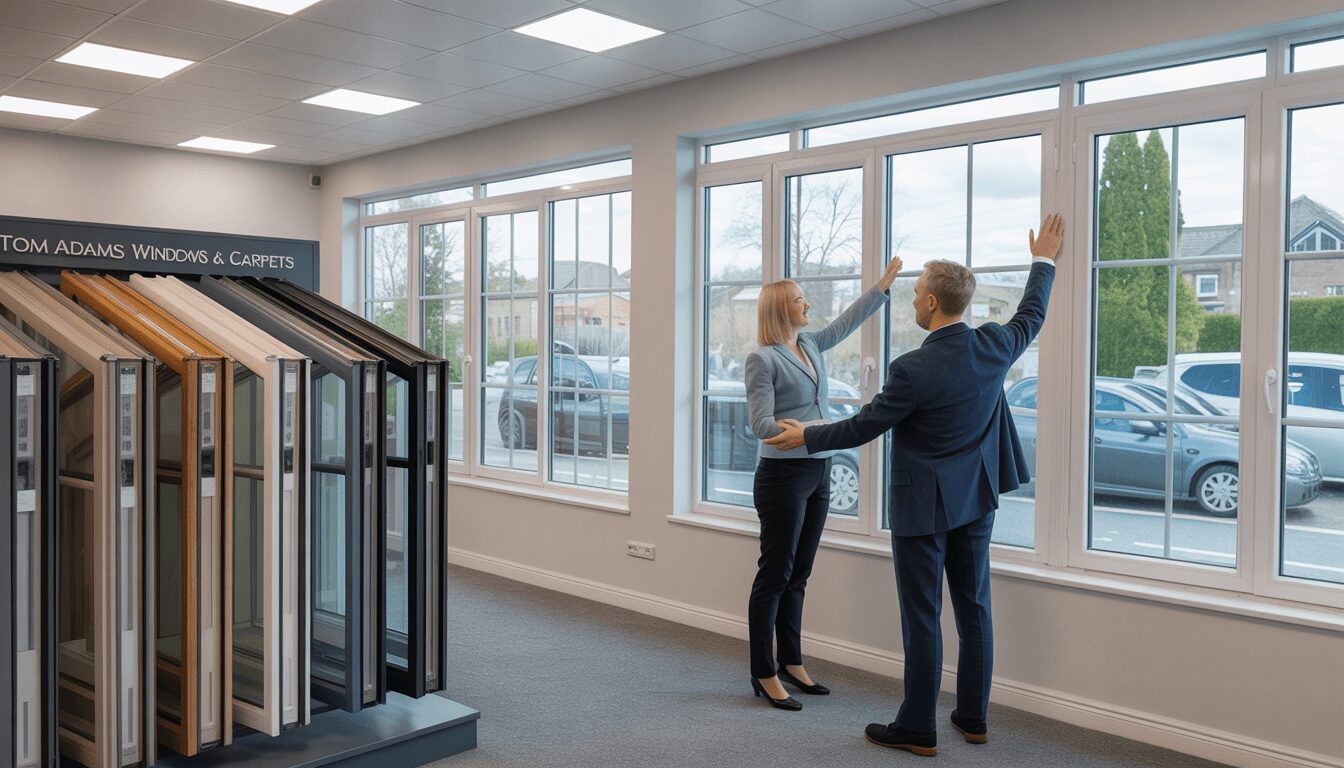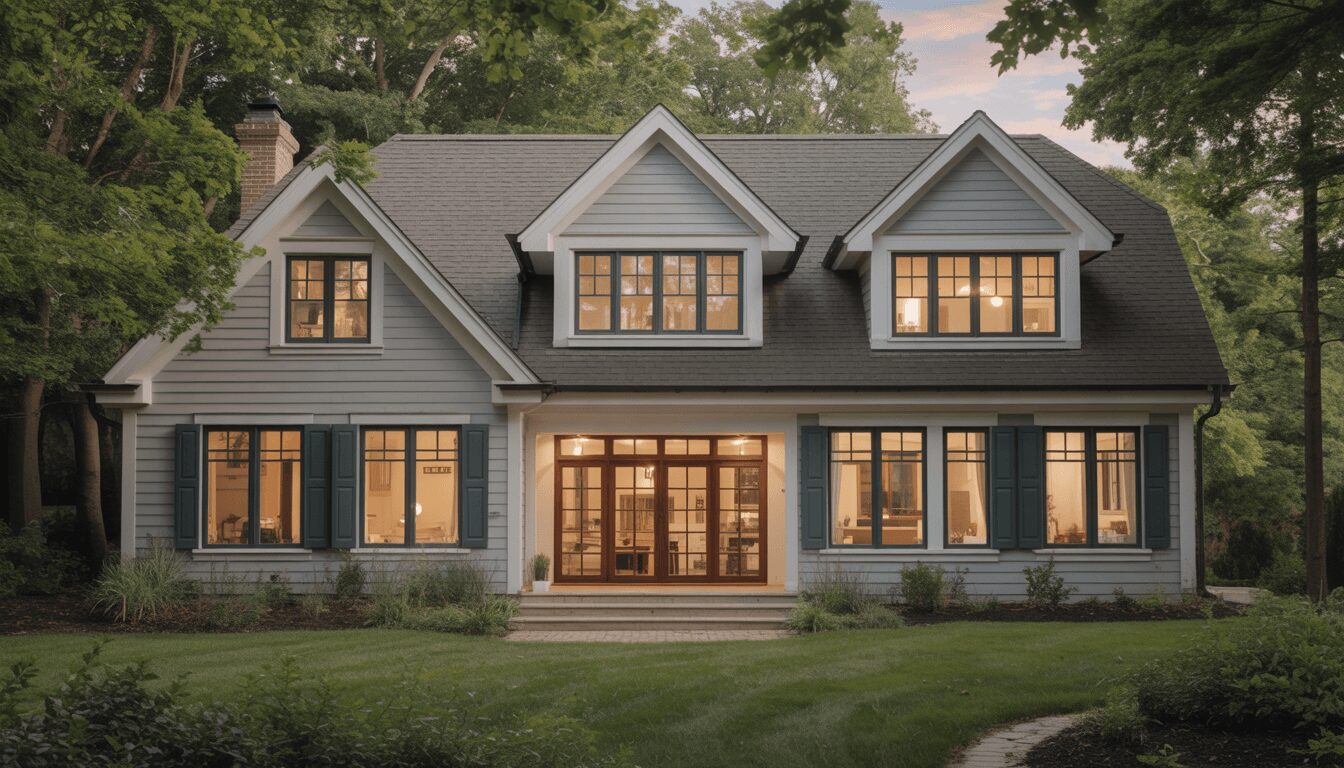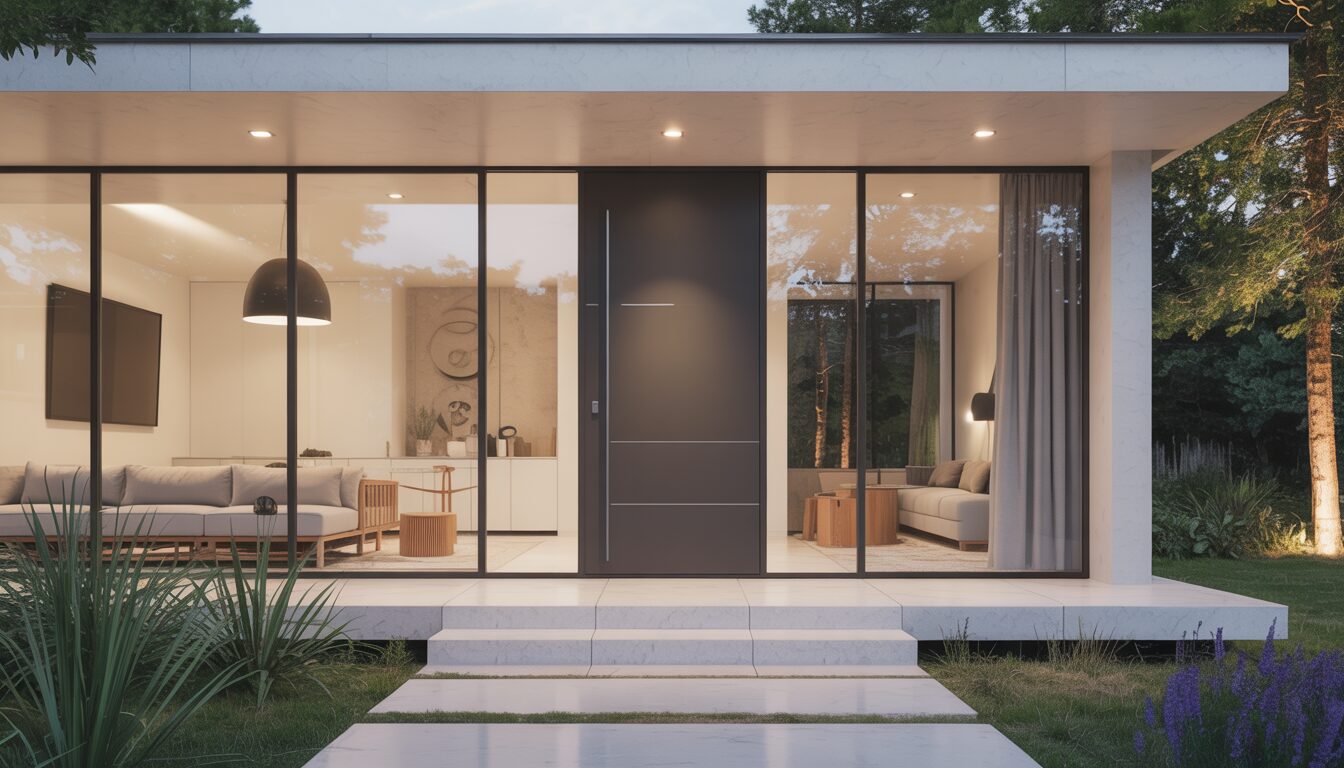What is a Right Hand Door?
A Comprehensive Guide to Door Swings
In the realm of home design and construction, the orientation and functionality of doors often go unnoticed. Yet, terms like right hand door or left hand door are integral to the process, ensuring that spaces are functional, accessible, and aesthetically pleasing. In this guide, we will delve into the nitty-gritty of door swings, including the right hand inswing door, their significance, and their application in different contexts.
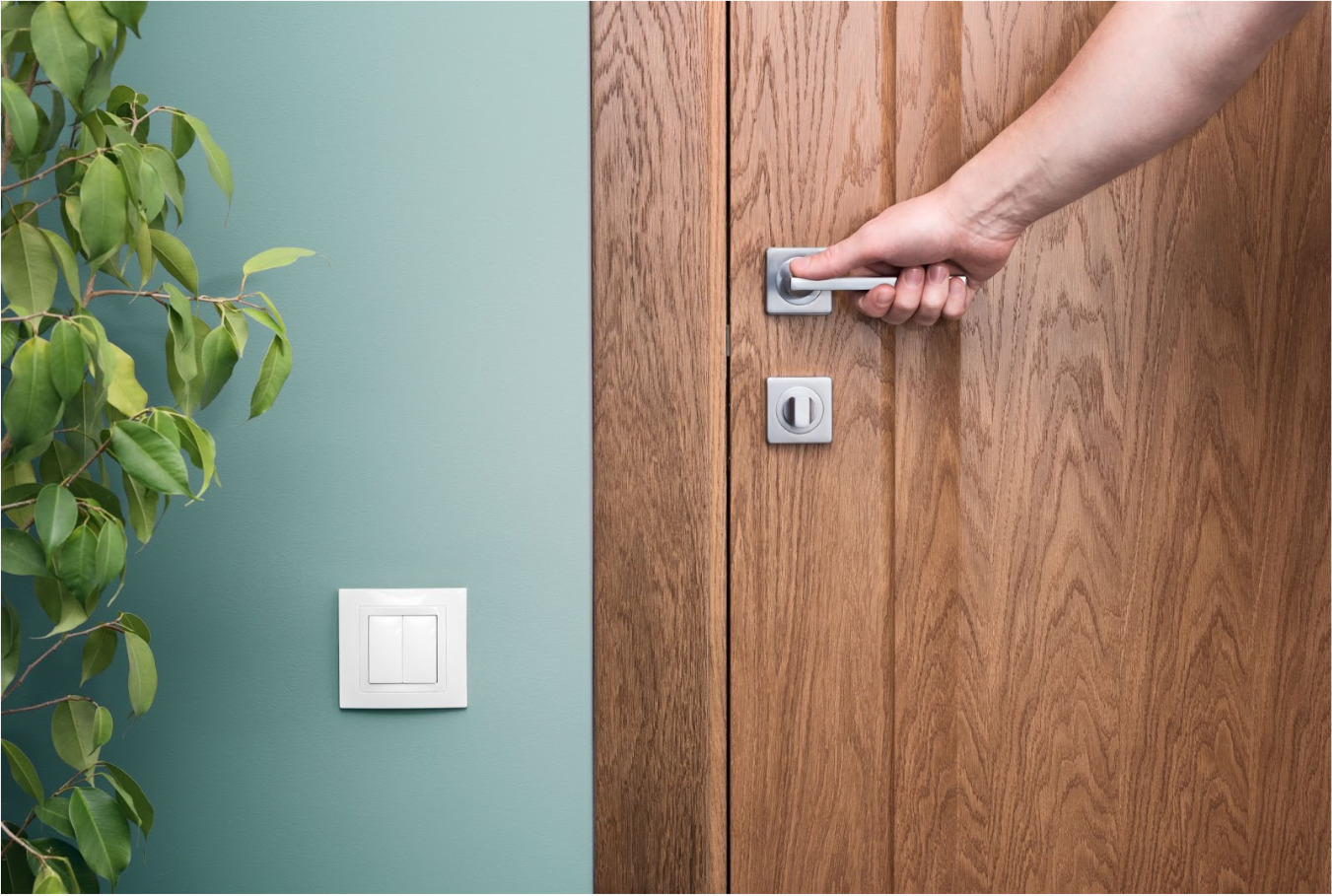
Understanding the Basics of Door Swings
When we talk about door swings, we’re referring to the direction in which a door opens. While it may seem like a minor detail, the direction in which a door swings can impact the layout of a room, its usability, and even safety protocols. There’s a method to the madness, and it’s rooted in both tradition and practicality.
The Anatomy of the Right Hand Door
So, what exactly is a right hand door? It’s all about perspective. When you stand outside a home, facing a closed door:
- If the door handle is on your right and it opens into the home, that’s a right hand inswing door.
- Conversely, if the handle is on your left but the door swings away from you, opening outwardly, it’s still categorized as a right hand door.
This might seem counterintuitive at first, especially the latter scenario. However, door naming conventions are based on the hinge placement and the direction the door swings, not necessarily the position of the handle.
The Right Hand Inswing Door
Within the broader category of right hand doors, we have more specific classifications. The right hand inswing door is one such type. When we refer to a door as an inswing, we mean that it swings inside the home or room.
So, if you’re standing outside a room and the door handle is on your right, if you open it and the door swings into the room, it’s a right hand inswing door.
It’s worth noting that inswing doors are prevalent in many residential settings, especially in private spaces like bedrooms and bathrooms. They offer more privacy and, in many contexts, are considered safer because they can be more robust against external forces.
Contrasting with the Left Hand Door
To truly grasp the concept of the right hand door, it’s helpful to contrast it with its counterpart, the left hand door.
Imagine the same scenario: standing outside a room, facing a closed door. If the door handle is on your left and it opens towards you, it’s a left hand door. If the handle is on your right but the door opens away from you, moving outwardly, it’s also considered a left hand door.If the door handle is on your right and it opens into the home, that’s a right hand inswing door.
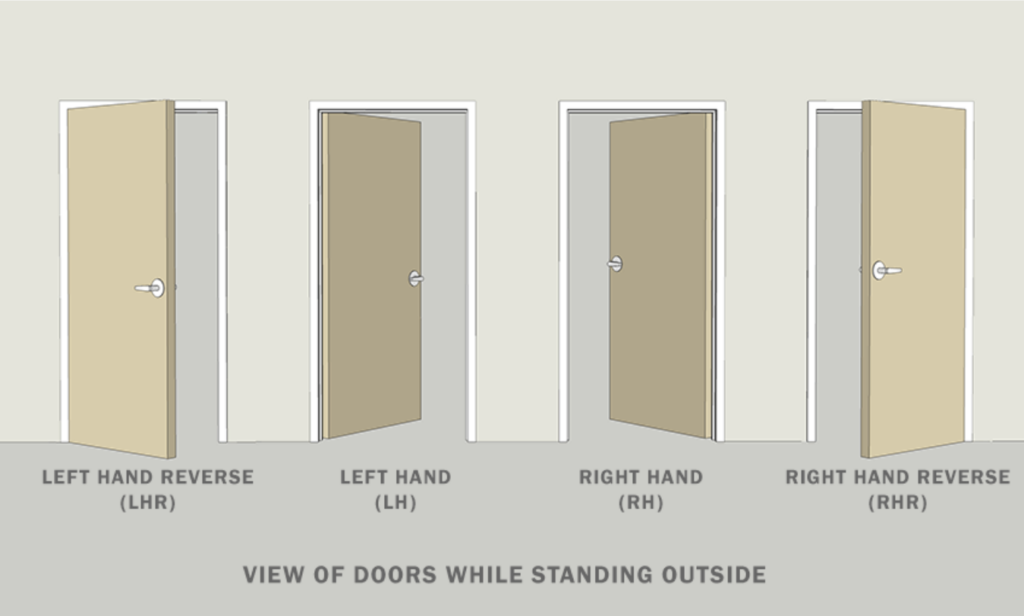
The Importance of Door Swings in Design and Functionality
Why so much emphasis on door swings? Because they can make a significant difference in the functionality of a space.
- Space Utilization: A door’s swing can determine how space in a room is utilized. For instance, in smaller rooms, an outward-swinging door might be preferable so as not to interfere with interior furniture or fittings. Please check with your township code.
- Flow of Movement: In busy areas, like commercial settings or public buildings, the direction of door swings can impact the flow of foot traffic. This is crucial for efficiency and can also be a safety concern in case of emergencies.
- Aesthetic Considerations: In design-centric spaces, the direction in which a door swings, whether it’s a right hand swing door or a left hand swing door, can impact the visual balance and symmetry of a room. It’s not just about function but also form.
- Safety Protocols: In certain settings, especially commercial or public spaces, the direction in which doors swing is regulated by safety codes. For instance, exit doors in public buildings often swing outward to facilitate rapid evacuation in emergencies.
Selecting the Right Door Swing for Your Space
When choosing a door and its swing direction, several factors come into play:
- Room Layout: Consider the room’s layout, especially if it’s a small space. An inswing door, like a right hand inswing, might not be ideal for a compact bathroom, for example, because it could hit fixtures or take up valuable space.
- External Factors: For exterior doors, consider factors like the presence of a storm door, the location of light fixtures, and the path of entry or exit.
- Light Switch: Always check where the light switches are. When walking in the room, the switches should be on the exposed wall opening.
- Personal Preference: Sometimes, the decision boils down to personal preference. Some people have a strong preference for doors that swing one way or the other.
Need an expert opinion? We at Tom Adams have been supplying and installing doors for decades. We’ve got the professional know-how, and expert staff waiting to help. Get your free estimate today!
In conclusion, understanding door swings and their implications is crucial for homeowners, designers, and builders. It’s a detail that influences daily life in ways we might not always recognize. By giving it due consideration, you can ensure that spaces are not just beautiful, but also functional and safe.
Frequently Asked Questions: Right Swing Doors
Why are some exterior doors designed to swing outward?
Outward swinging doors, like the Right Hand Reverse (RHR) door, often provide better resistance against wind and external pressures. Moreover, in some climates and regions, they offer improved water drainage and can prevent water infiltration during heavy rains.
Are right swing doors more expensive than left swing doors?
No, the direction of the swing typically doesn’t impact the door’s price. The cost depends more on the material, design, brand, and other specific features.
Can I change the swing direction of an existing door?
Yes, with the appropriate tools and expertise, it’s possible to reverse the swing direction of a door. However, it may require modifications like repositioning the door frame, relocating hinges, and potentially addressing any latching or lock mechanisms.
How do I determine the swing of a door when buying online?
Online retailers typically provide a description or a diagram indicating the door’s swing. If you’re unsure, it’s best to contact the seller directly before purchasing. Also, reading the product’s reviews or Q&A section can sometimes provide clarity.
Is there a standard swing preference for bathroom or bedroom doors?
While there’s no strict rule, most interior doors in residential settings, like bathrooms and bedrooms, are typically right hand inswing doors. This setup offers more privacy, optimizes room space, and aligns with common design preferences for a right hand door swing.
How does door swing affect accessibility for individuals with disabilities?
Door swing can play a significant role in accessibility. Outward swinging doors might be easier for individuals in wheelchairs to operate as they don’t require maneuvering space within the room to open the door. However, specific accessibility requirements may vary depending on local regulations and individual needs.
What are the safety considerations when choosing a door swing for emergency exits?
For emergency exits, doors typically swing outward to allow people to evacuate quickly without the door becoming an obstruction. It’s crucial to check local building codes and safety regulations when installing doors for such purposes.
How do right swing doors affect home security?
The direction of a door’s swing can influence security. Outward swinging doors can be more challenging for potential intruders to kick in due to the door’s structure and the direction of force. However, the security also depends on other factors like the door’s material, frame strength, and the quality of locks and deadbolts used.
Are there any specific maintenance considerations for right swing doors?
Maintenance largely depends on the door’s material and the environment in which it’s placed. However, for right swing doors that open outwardly, ensure that the external hardware and seals remain in good condition to prevent water and debris infiltration.
Do all door manufacturers offer both right and left swing door options?
Most reputable door manufacturers offer both right and left swing options to cater to a variety of architectural and design needs. If you have a specific requirement, always check with the manufacturer or retailer before making a purchase.
Always check with the township codes and look at the opening wall to see where light switches are located. Keep in consideration stair railings of the interior and exterior. If still unsure – ask the professionals at Tom Adams Windows and Carpets.
